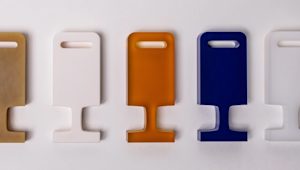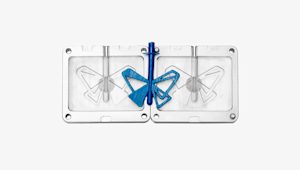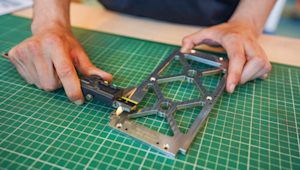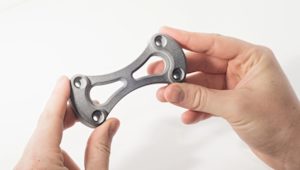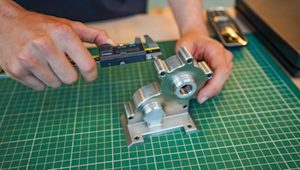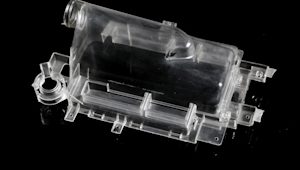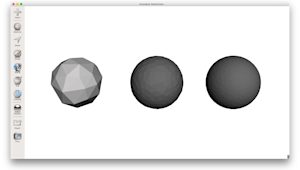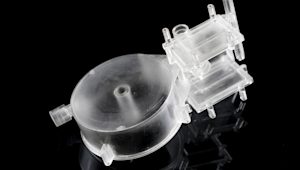When creating large batches of parts, you may need to rely on a material’s ability to perform the same time after time. That’s where repeatability comes in. In this article, we’ll take a look at the definition of material repeatability, its benefits, the factors that affect it, and the materials that exhibit the best repeatability.
What is repeatability?
In manufacturing, a materials' repeatability refers to the consistency of its properties across multiple production cycles or processes. To be repeatable, a material must show the same characteristics, such as strength, hardness, resistances, and other properties, each time it is used or processed.
The benefits of repeatability
If a material's properties vary significantly from batch to batch or part to part, it can lead to defects, failures, or other inconsistencies. On the other hand, materials with good repeatability help you make sure your parts always perform the same, in terms of both functionality and aesthetics. Let’s take a look at a few of the benefits this can bring to you.
-
Production consistency. Repeatable materials help you predict how a part will turn out. If each batch behaves differently, it is nearly impossible to anticipate the outcome of your manufacturing process.
-
Quality control. If you know a material's properties will remain the same, you can easily and quickly identify and correct deviations in product quality.
-
Cost efficiency. By minimizing the risk of failed production runs, you will be able to optimize your manufacturing processes and reduce waste – resulting in overall cost savings.
-
Accurate prototyping. Creating prototypes of new designs or parts with repeatable materials will help you ensure your testing is as accurate as possible.
What factors affect repeatability?
Even if your material exhibits natural degrees of repeatability, you should still take steps to maximize it. Here, you should consider the following factors that may affect your materials’ repeatability.
-
Material properties. A material’s chemical composition, grain size, hardness, or other related properties can affect its behavior during processing, and as a result affect repeatability. Additionally, some material properties may change over time, leading to a loss of stability.
-
Material sourcing. A material might slightly differ depending on its source of origin. To ensure your material exhibits the same degrees of repeatability, try to use the same supplier.
-
Environmental conditions. Temperature, humidity, and light exposure are just a few of the conditions that may affect a material’s repeatability, meaning proper storage is key, as is choosing a material that can be subjected to such conditions, if necessary.
-
Material preparation or post-processing. Curing time or drying conditions can affect repeatability. The same goes for variations in mixing procedures (or improper mixing) that may be necessary if your material is an alloy or composite.
What manufacturing methods can achieve the best repeatability?
The manufacturing method you use will also greatly affect repeatability. Here are the top three manufacturing methods for achieving repeatable parts.
-
Injection molding. Injection molding is typically the preferred manufacturing method for repeatable parts. It can achieve excellent repeatability, even for complex, intricate parts with tight tolerances.
-
CNC machining. CNC machines can achieve extremely tight tolerances and produce parts with consistent dimensions and surface finishes.
-
3D printing. With precise control over printing parameters such as layer thickness and material composition, 3D printing is also able to produce repeatable parts with complex geometries – albeit in smaller batches than injection molding or CNC machining.
What materials have the best repeatability?
Now, let’s explore the materials that exhibit the best repeatability.
-
Aluminum alloys. Aluminum alloys such as 6061-T6 and 7075-T6 are known for their consistent strength, hardness, and dimensional stability. They are among the most popular materials used when repeatability is a top requirement.
-
Stainless steel. Certain grades of stainless steel, such as 304 and 316, exhibit excellent repeatability in terms of corrosion resistance, mechanical properties, and surface finish.
-
Titanium alloys: Titanium and its alloys, like Ti-6Al-4V, are known for consistently high strength-to-weight ratio, corrosion resistance, and repeatability.
-
Engineered plastics. Plastics like PEEK show high repeatability in terms of dimensional stability, mechanical strength, and chemical- and temperature-resistance.
-
Composites. Fiberglass composites and carbon fiber composites are examples of materials that offer repeatable mechanical properties, weight, and dimensional stability.
Select materials for custom parts
Explore our huge range of manufacturing materials with various different properties. We can also source many custom materials beyond those on our instant quoting platform, and are always happy to advise you on the best solution for your project. When you’re ready to get started, simply upload a CAD file to see pricing and lead times.
Frequently asked questions
What role does manufacturing equipment play in repeatability?
The right manufacturing processes and equipment helps ensure precise and consistent measurements – and repeatable results.
How does environmental control impact repeatability?
Temperature, humidity, and contamination can affect material stability and behavior.
Why is proper material handling necessary?
It prevents contamination, degradation, or changes to material properties.
What factors influence material stability?
Material sourcing, storage conditions, and exposure to environmental factors can affect a material’s properties, and therefore repeatability.








